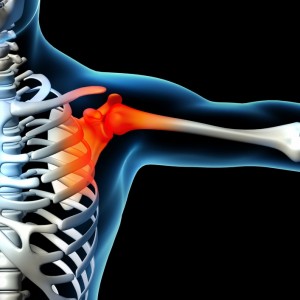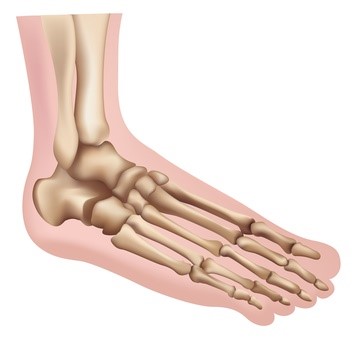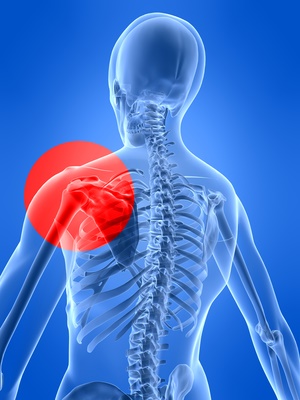
Ulnar Collateral Ligament Injuries in the Throwing Athlete
A great review article on ulnar collateral ligament injuries of the elbow in the throwing athlete was published in the May 2014 Journal of American Academy of Orthopedic Surgeons. This is an important topic given that UCL reconstructions have increased approximately 10 fold in the first decade of the 21st century.
The review article was written by Jeremy Bruce M.D. and James Andrews M.D. Dr. James Andrews has taken care of more elbow injuries in professional throwers than any other orthopedic surgeon in the world. He has performed the Tommy John operation over 2,000 times.
Mechanism of Elbow Injury
Repetitive valgus forces on the throwing elbow can place abnormal stress on the joint. In the thrower, many times the chronic wear predisposes throwers to an acute injury. During the mechanism of throwing, a significant valgus force is placed on the elbow. This is located on the inner side of the elbow. The inner side of the elbow is stabilized by the UCL (ulnar collateral ligament) as know as the Tommy John ligament.
The ulnar collateral ligament elbow reconstruction was first performed by Dr. Frank Jobe on a professional baseball player named “Tommy John” therefore the procedure has become known has the Tommy John procedure.
There are three bundles or sections that make up the ulnar collateral ligament of the elbow: 1) oblique, 2) posterior and 3) anterior bundles. The anterior bundle provides the main valgus support in the pitching motion and is the main restraint to valgus force from 30 to 120 degrees of elbow motion.
Patient History
Some patients will report an actual pop that occurs when throwing. Other athletes report just a vague pain that affects pitching accuracy or velocity. Most patients will report pain with late cocking and the acceleration phase.
Physical Examination
Make sure to check the ROM of the elbow and shoulder to evaluate for motion deficits, especially glenohumeral internal rotation and total rotation. Failure to address abnormal shoulder kinematics can be detrimental to the outcome of UCL injuries. Sometimes an ulnar collateral ligament elbow injury starts as a compensatory mechanism because of a shoulder problem.
Differential diagnosis for medial (inner sided) elbow pain includes the following:
- Medial epicondylitis
- Flexor pronator injuries
- Ulnar neuropathy and apophysitis
Stability Testing
In complete or partial tears of the ulnar collateral ligament there may be little to no laxity that can be detected on physical examination. Named phyiscal tests for UCL injuries include: the milking maneuver, moving valgus test, and the valgus extension overload test.
Imaging Studies
Plain X-rays are obtained to look for arthritis changes, bony UCL avulsions, traction spurs and calcification in the UCL and/or poteromedial olecranon osteophytes. The most common findings on plain films are olecranon osteophyte formations and calcifications within the ulnar collateral ligament (UCL).
MRI testing can help define the soft tissue anatomy . An MRI arthrogram will give more detail and give more accurate results as compared to a plain MRI scan. The T- sign is seen when a pathological amount of dye leaks down along the sublime tubercle but is contained under the superficial fibers of a partially torn UCL. This is the most common finding seen on an MRI arthrogram.
Preventing Ulnar Collateral Ligament Injury
Studies have examined youth pitchers and found that players who pitched more than 100 innings a year had a 3.5 times greater chance of sustaining a serious injury. With this in mind, it is advisable that young pitchers are limited to 100 innings in any calendar year.
It may also be recommended that youth players do not play baseball year round to ensure a period of active rest from throwing in the off season. Youth pitchers are also discouraged from pitching for multiple teams and showcases because doing so has been associated with elbow pain and a potential elbow injury.
A ten year prospective study revealed that overuse is the biggest risk factor for injury. Some of the research results include:
– 500% increased risk for surgery in youth pitchers pitching more than 8 months a year.
– 400% risk for surgery in those pitching over 80 pitches per game
– 250% risk for surgery in those that could throw a fastball > 85 mph
It is also recommended to limit curve ball pitching at an early age because of the high level of neuromuscular control needed to throw with proper mechanics.
Further Education Needed To Reduce Elbow Injury Risk For Throwing Athletes
Education is still needed to reduce the risk of elbow injuries for throwing athletes. A recent study on public perception of pitching showed that 31% of coaches, 28% of players and 25% of parents did NOT believe that the number of pitches thrown was a risk factor for injury.
An equally scary statistic is that 51% of high school athletes, 37% of parents and 30% of coaches think that UCL (Tommy John surgery) reconstruction should be performed on players WITHOUT an elbow injury to enhance performance.
USA Baseball Medical / Safety Advisory Committee Recommendations of Days of Rest After a Pitching Event
Age (years). 1 day of rest 2 days of rest 3 days of rest 4 days of rest
9-10 21-33 pitches 34-42 pitches 43-50 pitches. 51 + pitches
11-12 27-34 35-54 55-57 58 +
13-14 30-35 36-55 56-69 70 +
15-16 30-39 40-59 60-79 80 +
17-18 30-39 40-59 60-89 90 +
Non surgical management of an UCL Injury of the Elbow
- Rest. For a partial UCL tear: 6 weeks of no throwing while undergoing physical therapy
- Mechanics. Address pitching mechanics, shoulder kinematics and shoulder motion deficits as well as strengthening of the core, lower extremities and upper extremities during the 6 week rehab period.
- Gradual Increase in Activity. Once the patient is pain free and the kinetic chain deficits have been addressed, an integrated gradual throwing program may be started
It is very important that the return to a throwing program is gradual and guided by a skilled physical therapist or athletic trainer in order to keep the athlete pain free until competitive play is allowed.
Surgical Management for UCL Injury
Use of an allograft is recommended: ipsilateral palmaris longus or the contralateral gracilis tendon is used in patients without a palmaris longus.
Outcomes After Surgery For A UCL Injury
– Average of 4 months after surgery to return to throwing
– Average 11 months to full competition
– 83% of throwers will on average return to the same level of throwing and competition
Summary
Prevention of an ulnar collateral injury (UCL) is best and is achieved through limiting the number of pitches with appropriate number of rest days. Partial tears of the ulnar collateral ligament can be treated non-operatively. Full thickness tears of the UCL do well with surgical intervention
 Massive Chronic Rotator Cuff Tear –
Massive Chronic Rotator Cuff Tear –









Recent Comments